Mardi Himal Trek in February – Calling all thrill-seekers and adventure enthusiasts! Brace yourself for an extraordinary winter expedition in the mesmerizing Annapurna region of Nepal. The Mardi Himal Trek (5,587 meters) in February offers an adrenaline-fueled journey through a snow-draped wonderland, pushing your limits and rewarding you with heart-pounding thrills.
In this blog, we will unveil the exhilarating experiences that await you on the Mardi Himal Trek in February, igniting your sense of adventure and leaving you with memories that will last a lifetime.
Weather condition and Temperature
February falls within the winter season in Nepal, and Mardi Himal Trek experiences colder temperatures compared to other months of the year.

It is important to note that weather conditions can be unpredictable in mountainous regions, so it’s advisable to be prepared for a range of weather scenarios.
Temperature
In February, the temperature in the Mardi Himal Trek area can range from mild to extremely cold, depending on the altitude. During the daytime, temperatures at lower altitudes (around 2,500 to 3,000 meters or 8,202 to 9,843 feet) may vary between 5 to 15 degrees Celsius (41 to 59 degrees Fahrenheit).
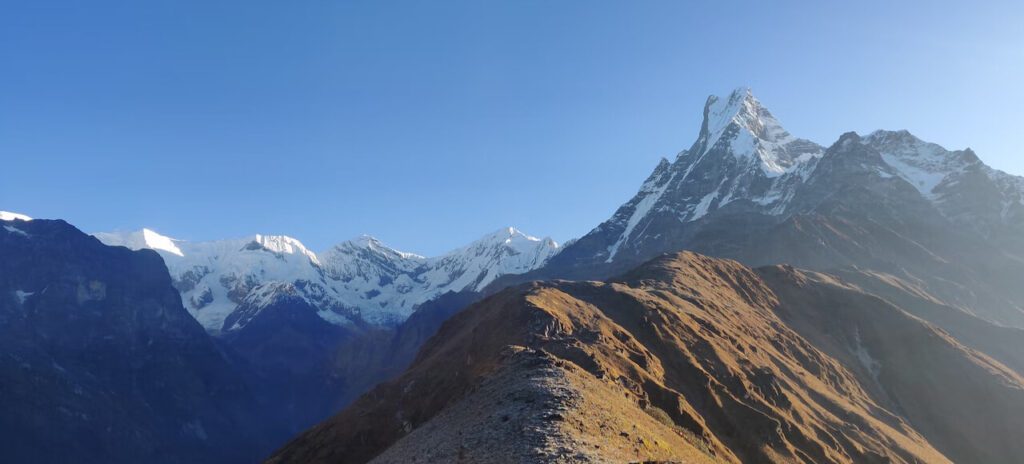
However, as you ascend higher into the mountains, the temperature drops significantly. At higher altitudes, such as Mardi Himal Base Camp (around 4,500 meters or 14,764 feet), temperatures can dip below freezing, ranging from -5 to -15 degrees Celsius (23 to 5 degrees Fahrenheit) during the day and even colder at night.
Weather
February is part of the dry season in Nepal, but occasional snowfall or rainfall can occur, especially at higher elevations. It’s essential to be prepared for varying weather conditions, including cloudy skies, mist, fog, and the possibility of snowfall. The weather conditions can change rapidly, and it’s recommended to keep track of weather forecasts and consult with local trekking agencies or guides before setting out.

It’s important to note that the weather conditions and temperature can vary from year to year and there may be deviations from the typical patterns described above.
Crowd
The Mardi Himal Trek in February offers a relatively serene and less crowded experience compared to the peak trekking seasons in Nepal. With its picturesque landscapes and stunning views, the Mardi Himal region attracts adventurers throughout the year, but February offers a quieter and more tranquil environment for trekkers.
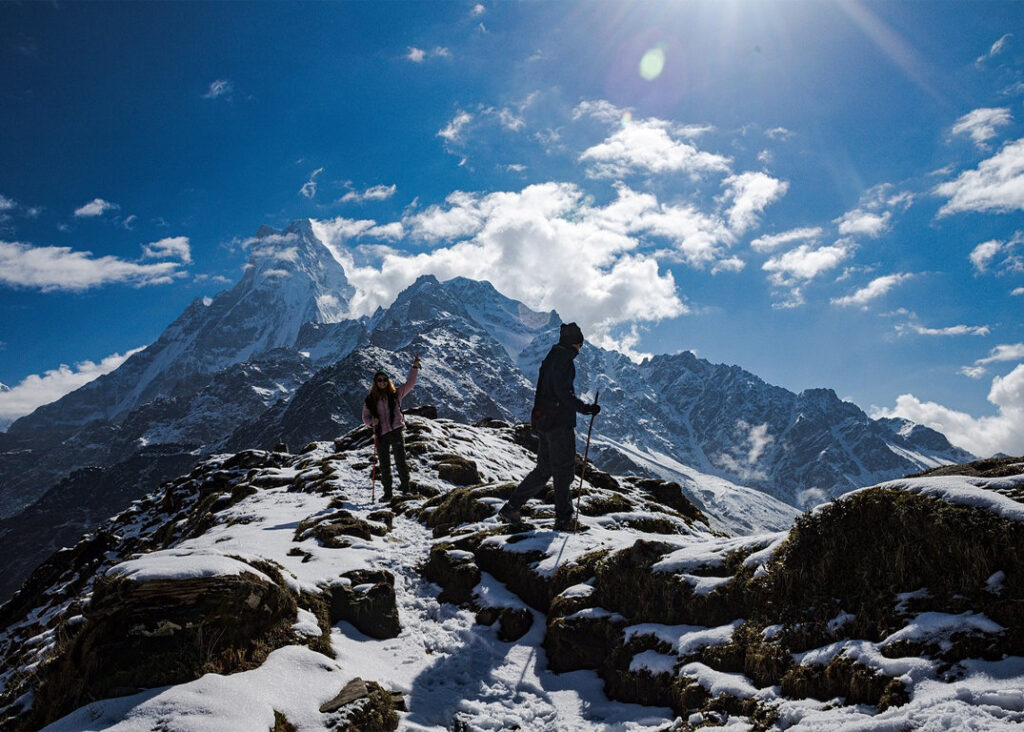
One of the primary reasons for the lower crowd levels during this time is the weather. February falls within the winter season in Nepal, and temperatures can be quite cold, especially at higher elevations. Trekkers need to be prepared for chilly weather and should pack appropriate winter gear. The colder conditions deter some trekkers from venturing into the region during this period, leading to fewer crowds on the trails.
Highlights
While this trek is captivating throughout the year, experiencing it in February unveils a unique and awe-inspiring adventure. Join us as we delve into the highlights of the Mardi Himal Trek during this winter wonderland.
Also Read: Mardi Himal Trek in January: Weather, Difficulty, Temperature, Travel Tips, and More
Snowy Splendor
February marks the winter season in Nepal, transforming the Mardi Himal Trek into a picturesque wonderland. The trail, adorned with a fresh layer of snow, casts a magical spell on the surroundings.

The snow-capped peaks, including Machhapuchhre (Fish Tail), Annapurna South, and Hiunchuli, create a breathtaking backdrop throughout the journey. The trail’s tranquility and untouched beauty offer an otherworldly experience that avid trekkers and nature enthusiasts will cherish.
Serene Trails
One of the key advantages of trekking the Mardi Himal trail in February is the peaceful ambiance. Unlike the peak seasons, the trails are less crowded, allowing you to immerse yourself in the serenity and solitude of nature.

The tranquility allows for a more intimate connection with the mountains and a chance to appreciate the subtle sounds of nature, making it an ideal escape from the chaos of everyday life.
Crystal Clear Views
February brings stable weather conditions to the region, with clear blue skies providing outstanding visibility. This means that you’ll have the opportunity to witness breathtaking views of the surrounding Himalayan peaks at their absolute finest.

As you ascend through the trail, each turn offers panoramic vistas that will leave you in awe. The pristine vistas combined with the peaceful ambiance create a truly unforgettable experience.
Cultural Encounters
While the Mardi Himal Trek is known for its natural wonders, it also offers a glimpse into the rich cultural heritage of the region. As you pass through picturesque villages and terraced fields, you’ll encounter friendly locals who warmly welcome trekkers.
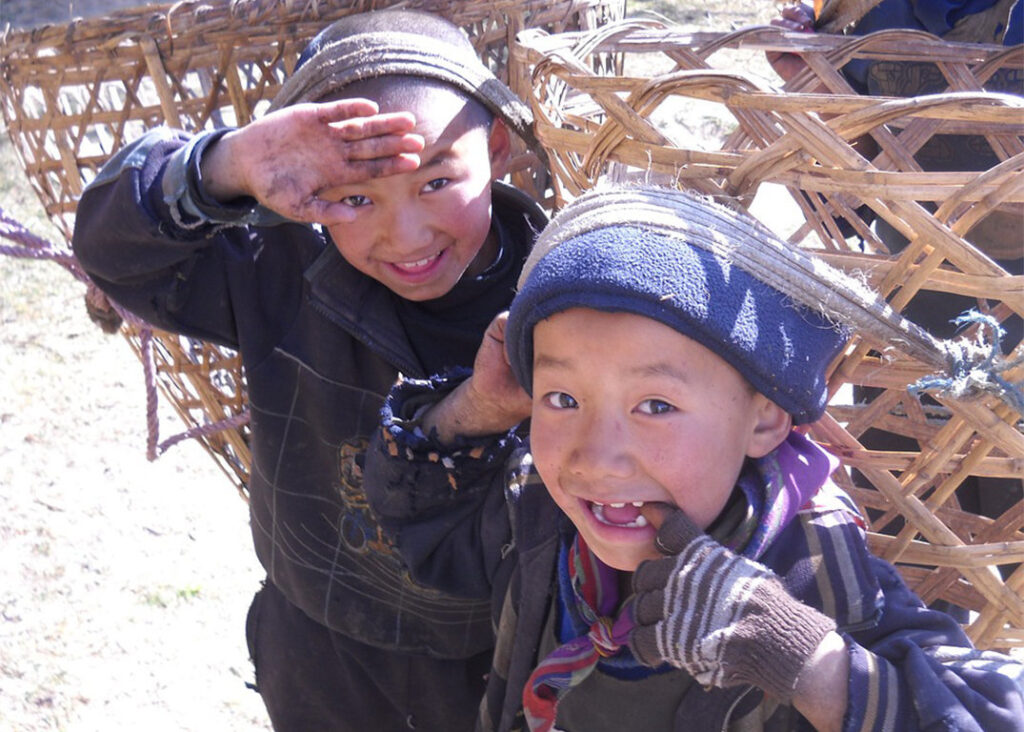
February presents a unique opportunity to witness the traditional way of life in these remote villages, as the locals go about their daily routines, providing a fascinating cultural immersion.
Authentic Tea Houses
Along the Mardi Himal Trek, you’ll find cozy and rustic tea houses that provide warmth and comfort after a day of trekking. During February, these tea houses are less crowded, allowing you to enjoy a more personalized experience.
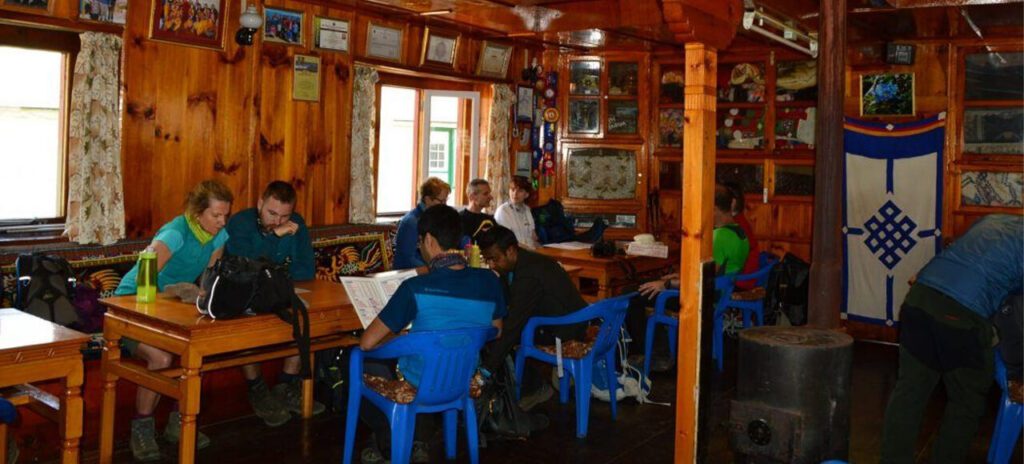
Savor authentic Nepalese cuisine, indulge in a cup of hot masala tea, and bond with fellow trekkers around a crackling fireplace. The hospitality and warmth of the locals will make your stay even more memorable.
Festivals
While the Mardi Himal Trek itself does not coincide with any specific festivals, trekkers can witness and participate in various festivals in the surrounding areas during their journey. Here are some notable festivals that you may encounter:
You may also like: Mardi Himal Trek vs Annapurna Base Camp Trek
Shivaratri
This is an important Hindu festival that you might encounter during the Mardi Himal Trek. Shivaratri, which translates to “the Night of Shiva,” is dedicated to Lord Shiva, one of the principal deities in Hinduism. This festival usually falls in February or March, and it holds great significance for devotees of Lord Shiva.

On the occasion of Shivaratri, devotees observe fasting, engage in prayers, and partake in various rituals to seek blessings and express their deep devotion to Lord Shiva. They visit renowned Shiva temples like the Pashupatinath Temple in Kathmandu or smaller local temples along the Mardi Himal Trek route.
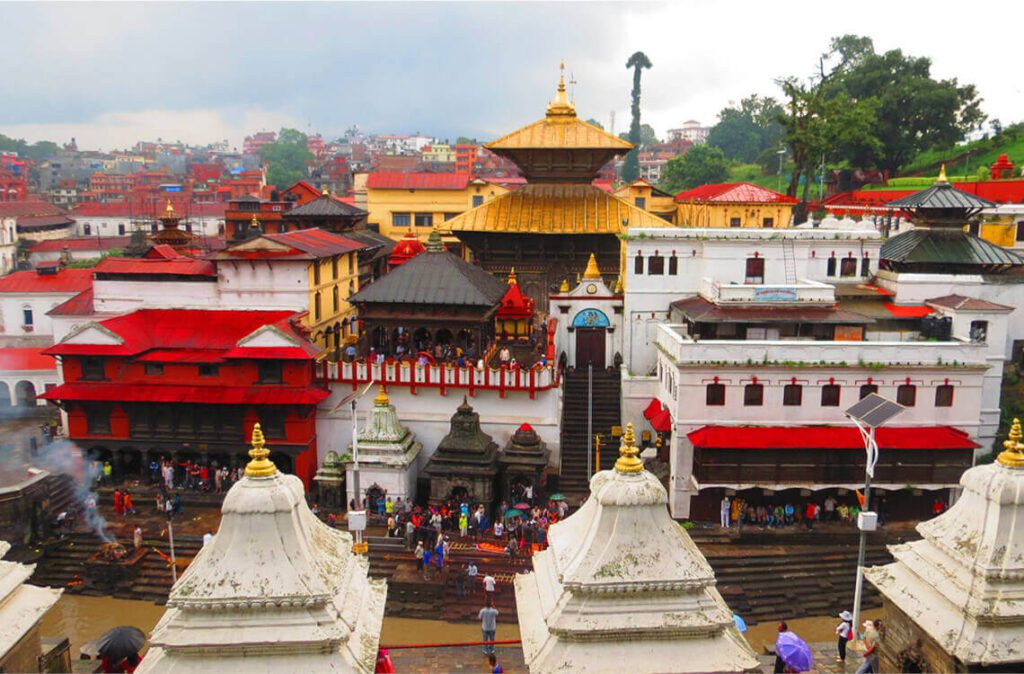
There, they offer flowers, fruits, and milk to the Shiva linga which is a symbolic representation of Lord Shiva. The temples are adorned with vibrant lights and decorations, fostering a vibrant and spiritually uplifting atmosphere.
Sonam Lhosar
Sonam Lhosar is another significant festival that you might encounter during the Mardi Himal Trek, particularly in areas with a significant Tamang community. This is the Tamang New Year and is celebrated with much enthusiasm and joy.

During Sonam Lhosar, Tamang families come together to celebrate and exchange greetings. They wear traditional attire, perform cultural dances like the Tamang Selo, and engage in music and singing. People visit monasteries and temples, offering prayers and seeking blessings for the upcoming year.
Delicious traditional food and beverages, such as khapse and chang (a millet-based alcoholic beverage), are prepared and shared among family members and community members.
Kathmandu to Mardi Himal Trek
To reach the Mardi Himal Trek from Kathmandu, you can follow the steps below:
Popular: Luxury Tour Packages for Couples in Nepal
Start in Kathmandu
Kathmandu which is the capital city of Nepal is the starting point for most treks in the region.
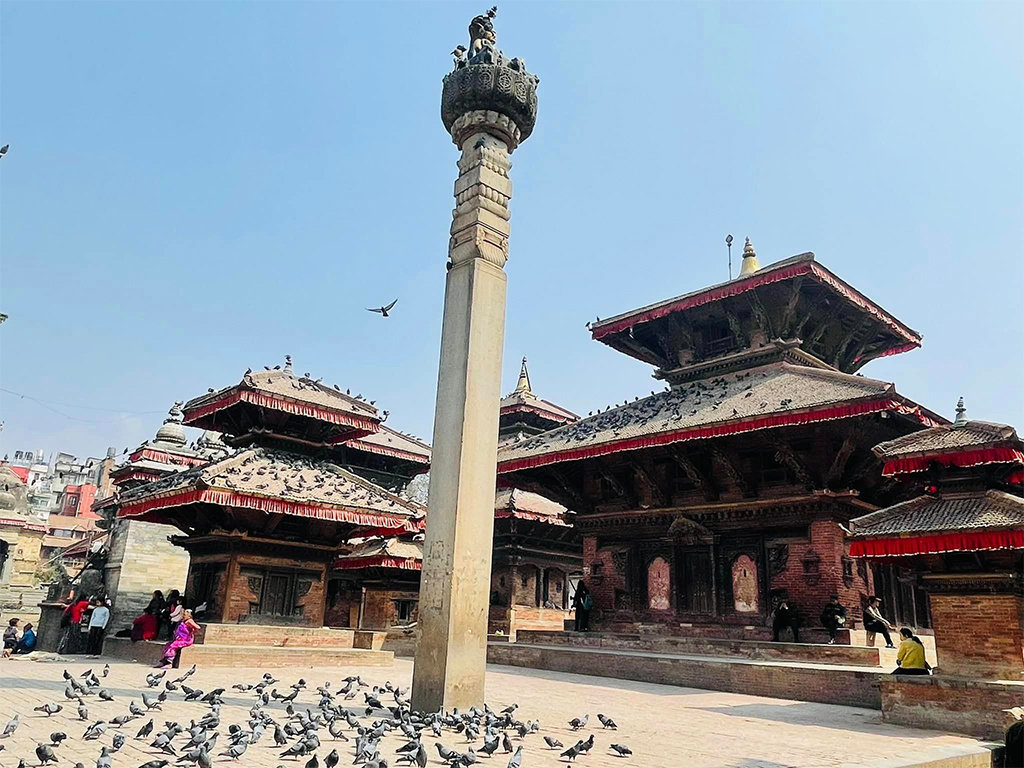
Make sure you have obtained the necessary permits and trekking equipment before you begin your journey.
Travel to Pokhara
From Kathmandu, you can either take a domestic flight or a bus to Pokhara.

The flight takes around 25 minutes while the bus journey can take around 6-7 hours, depending on the traffic and road conditions.
Pokhara to Kande
Once you reach Pokhara, your next destination is Kande which is the starting point of the Mardi Himal Trek. You can hire a private vehicle or take a local bus from Pokhara to Kande.
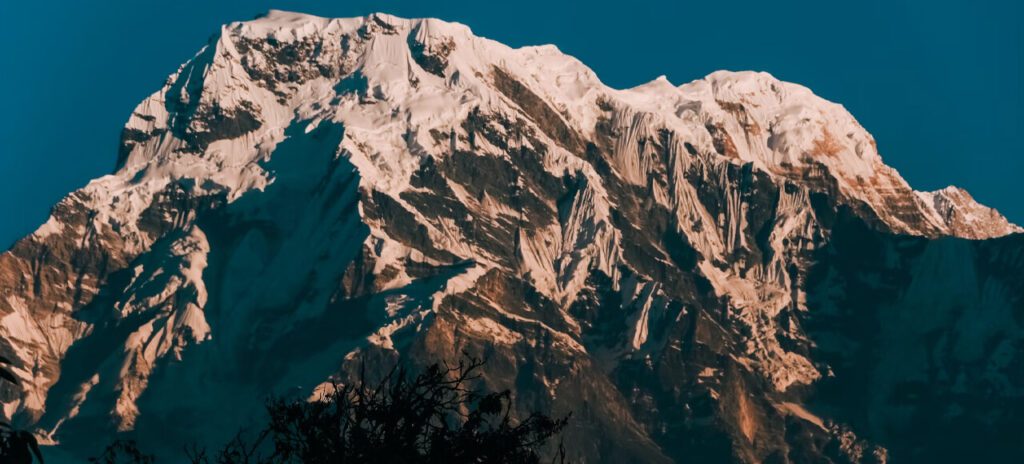
The journey takes around 1-2 hours.
Trek from Kande to Australian Camp
The trek begins from Kande, and the first stop is Australian Camp. It is a beautiful viewpoint offering panoramic views of the Annapurna range. The trail is well-marked, and it takes around 3-4 hours to reach Australian Camp from Kande.
You may also like: Best Seasons and Months to Trek in Nepal
Australian Camp to Forest Camp
From Australian Camp, the trek continues towards Forest Camp (also known as Kokar). The trail takes you through lush forests of rhododendron and oak trees.

The trek from Australian Camp to Forest Camp takes around 5-6 hours.
Forest Camp to High Camp
After spending a night at Forest Camp, the trail ascends further towards High Camp. As you gain altitude, the views become more spectacular, with close-up views of Machhapuchhre (Fishtail) and Mardi Himal. The trek from Forest Camp to High Camp takes around 4-5 hours.
High Camp to Mardi Himal Base Camp and Back
From High Camp, you can hike to the Mardi Himal Base Camp, which is the highlight of the trek.
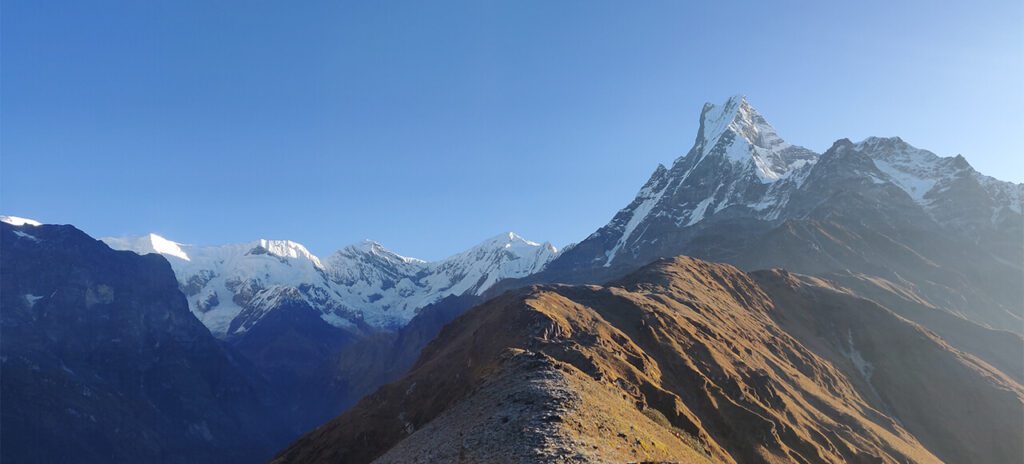
The trail offers breathtaking views of the surrounding mountains and valleys. After spending some time at the base camp, you can retrace your steps back to High Camp.
High Camp to Siding Village
From High Camp which is the trek that descends towards Siding Village. The trail passes through picturesque landscapes, terraced fields, and small settlements. The trek from High Camp to Siding Village takes around 5-6 hours.
Siding Village to Lumre and Drive to Pokhara
From Siding Village, you’ll trek to Lumre where you can catch a local bus or hire a private vehicle to Pokhara.
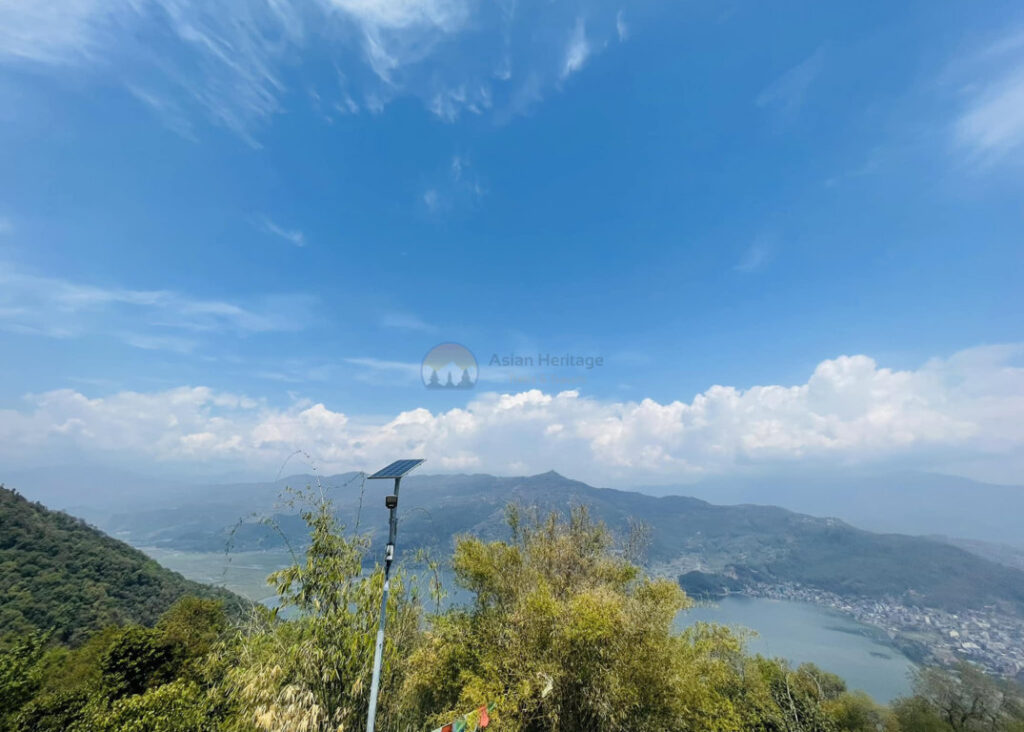
The journey from Siding Village to Lumre takes around 2-3 hours, and from Lumre to Pokhara, it takes around 1-2 hours.
Return to Kathmandu
Once you reach Pokhara, you can either take a flight or a bus back to Kathmandu, depending on your preference and schedule.

Flora
Known for its stunning views, diverse landscapes, and rich biodiversity, this trek offers a unique opportunity to witness the flora and fauna of the Himalayas. While February falls within the winter season, there is still some interesting flora that can be spotted along the Mardi Himal Trek during this time.
Rhododendrons
The Mardi Himal Trek is famous for its vibrant rhododendron forests. Although most rhododendron species bloom during spring, you might still come across some early blooming varieties in February.

These beautiful flowers can be seen in shades of pink, red, and white, adding a splash of color to the winter landscape.
Juniper
Another common plant species found along the trail is the juniper. These evergreen shrubs are well-adapted to colder climates and can withstand harsh winter conditions. Junipers have needle-like leaves and produce small berries which are often used in traditional medicine and culinary preparations.
More: Embracing Nepali Culture and Basic Etiquette
Oak Trees
As you ascend higher into the trek, you may encounter oak trees, particularly the evergreen oak species. These trees provide shade and shelter to various bird species and are known for their dense foliage and broad, spreading canopies.
Bamboo
Bamboo groves are scattered throughout the lower sections of the trek. These tall and slender plants create a serene and picturesque environment.

Although bamboo is not unique to winter its evergreen nature ensures that it remains lush and vibrant throughout the year.
Moss and Lichens
During the winter months, when the trees shed their leaves, moss, and lichens become more noticeable.
These non-vascular plants grow on rocks, branches, and tree trunks, adding texture and color to the surroundings. They thrive in the moist and cool conditions of the Himalayan forests.
Ferns
In the moister sections of the trek, particularly near waterfalls and streams, you may come across ferns. These non-flowering plants have feathery fronds and thrive in damp environments. Their vibrant green foliage adds a touch of freshness to the surroundings.
Also Check: Tengboche Monastery: The oldest monastery in Khumbu
Fauna
This trek offers not only awe-inspiring mountain vistas but also a chance to encounter a diverse range of fascinating wildlife. February, with its crisp winter air and enchanting snowy panoramas, presents a unique opportunity to spot some incredible animals along the Mardi Himal Trail. Join us as we delve into the fascinating world of wildlife awaiting you during this trek.
Red Panda (Ailurus fulgens):
Featuring prominently on the wish list of wildlife enthusiasts, the elusive Red Panda calls the forests of the Mardi Himal region it’s home. With its vibrant red coat, bushy tail, and endearing features, encountering a Red Panda is a truly magical experience.

These playful creatures are known for their tree-dwelling habits, so keep a keen eye on the canopy as you trek through the dense rhododendron and bamboo forests.
Himalayan Tahr (Hemitragus jemlahicus):
For wildlife enthusiasts fascinated by mountain ungulates, the Mardi Himal Trek offers a chance to spot the majestic Himalayan Thar. With its striking curved horns and thick woolly coat, this wild goat species navigates the rugged terrain with ease.

Keep your camera ready as you traverse the higher altitudes, as these sure-footed creatures are often found grazing on the alpine meadows.
Himalayan Monal (Lophophorus Impejanus):
A vibrant symbol of the Himalayas, the Himalayan Monal is a kaleidoscope of colors that will leave you in awe. The male Monal boasts a magnificent plumage with hues of green, purple, and gold, while the female exudes a more subtle beauty.
These birds are often found in the lower forested areas of the Mardi Himal Trail, so be prepared to capture the essence of this resplendent creature through your lens.
Musk Deer (Moschus chrysogaster):
Known for its unique musk glands, the Musk Deer is another fascinating creature that roams the forests of the Mardi Himal region. These small, solitary deer possess fang-like canines and are exceptionally skilled at camouflage.

Although spotting a Musk Deer requires patience and a keen eye, the experience is well worth it. Keep your senses sharp as you traverse the quiet forest trails.
Difficulty Level of Mardi Himal Trek in February
The Mardi Himal Trek in February poses a considerable level of difficulty, making it an ideal choice for experienced trekkers seeking a thrilling challenge. During this time, the trek is characterized by harsh winter conditions and unpredictable weather patterns. The trail is often covered in snow, adding an extra layer of complexity to the journey. Steep ascents and descents can become slippery and require careful navigation, demanding a good level of physical fitness and trekking experience.
Additionally, the sub-zero temperatures call for appropriate cold-weather gear and proper acclimatization to prevent altitude-related issues. Despite the difficulties, those who embark on the Mardi Himal Trek in February are rewarded with awe-inspiring views of snow-capped peaks, tranquil forests, and a sense of accomplishment that comes with conquering such a challenging adventure.
Important Considerations
Winter Gear
Given the colder temperatures, proper winter trekking gear is essential. Layered clothing, insulated jackets, warm sleeping bags, and sturdy boots are a must.

Preparedness
February is still the winter season, and weather conditions can be unpredictable. It’s crucial to be prepared for possible snowfall or occasional showers and carry necessary equipment like trekking poles, gaiters, and waterproof gear.
Physical Fitness
The Mardi Himal Trek is a moderate trek, but it still requires a reasonable level of physical fitness. Prior preparation and regular exercise will help you enjoy the trek to its fullest.
Conclusion
Embarking on the Mardi Himal Trek in February promises a remarkable adventure, with its pristine winter landscapes, awe-inspiring views, and cultural encounters. The serenity of the trail, coupled with lesser crowds, makes it an ideal time for trekkers seeking a unique and authentic experience.
Just remember to pack accordingly and prepare yourself for the winter conditions. Get ready to be mesmerized by the beauty of the Himalayas on this extraordinary journey.
Let our expert team at Asian Heritage Treks and Travel take care of everything — from guided tours to personalized packing tips and travel arrangements.
Plan an unforgettable journey







